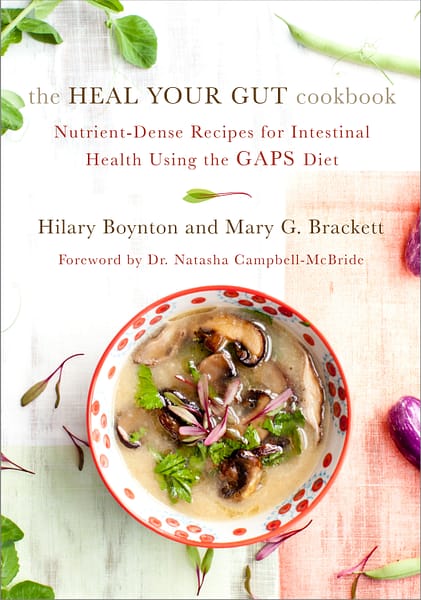The Fresh Food Farmacy

Health care is one of the most talked about topics with availability and expenses constantly under scrutiny. Insulin prices have skyrocketed and those who need it are barely able to or cannot afford the life-saving medicine. There are other systems in place that have a new take on health care which prioritizes eating fresh and healthy foods, especially for those with type 2 diabetes.
The following is an excerpt from Curable by Travis Christofferson. It has been adapted for the web.
Brent James isn’t the only “moneyball” type of health care reformer. There are others, too, who have embraced creative, evidence-based solutions to improving health care. While stumping for health care reform in 2009, Barack Obama mentioned a few other such innovators. “We have to ask why places like the Geisinger Health system in rural Pennsylvania, Intermountain Health in Salt Lake City or communities like Green Bay can offer high-quality care at costs well below average, but other places in America can’t,” Obama said to an overflowing gymnasium at Green Bay Southwest High School.
“We need to identify the best practices across the country, learn from the success and replicate that success elsewhere,” he continued. “And we should change the warped incentives that reward doctors and hospitals based on how many tests or procedures they prescribe, even if those tests or procedures aren’t necessary or result from medical mistakes. Doctors across this country did not get into the medical profession to be bean counters or paper pushers, to be lawyers or business executives. They became doctors to heal people. And that’s what we must free them to do.”
One of the health systems Obama mentioned, Geisinger Health—a group of a dozen hospitals and clinics in rural Northeastern and central Pennsylvania—looked for a creative solution to tackle the already massive and growing problem of type 2 diabetes. Like checklists, handwashing, and the repurposing of five-cent, generic drugs, Geisinger’s idea seemed, on the surface, like an extraordinarily simple solution centered on treating the cause, rather than the symptoms, of type 2 diabetes.
Their solution consisted of a single prescription: eat fresh, healthy food.
Globally, type 2 diabetes is a slow-moving health crisis. The majority of adults in the United States (52.3 percent), have either type 2 diabetes (14.3 percent) or prediabetes (38 percent), a category that is just a hop and a skip away from a diagnosis of full-blown type 2 diabetes. And the cost of treating type 2 diabetes in the United States is staggering—it currently exceeds $240 billion per year—and rising at a dizzying pace.
At its core, diabetes is the inability to process blood sugar due to a condition called “insulin resistance.” When we eat a carbohydrate-rich meal, the carbs are broken down through digestion into glucose (sugar). The pancreas, sensing the rise in blood glucose, then releases the hormone insulin. Insulin then facilitates the transport of glucose into cells, where it can be burned as fuel or processed into fat. As we age, however, this finely tuned process can become dysregulated.
Our cells begin to lose the ability to respond to insulin; they become resistant to the hormone. The result of this phenomenon is excessive glucose lingering in our blood, elevating our blood sugar to dangerous levels. Glucose, a very rigid molecule, can easily cause physical damage to tissues it comes in contact with. This is why diabetics can experience such a wide range of problems, from nerve damage and cardiovascular disease to kidney disease, blindness, impotence, weight gain, brain fog, and a poorly functioning immune system.
The underlying cause behind the meteoric rise of type 2 diabetes in the world is a function of two lifestyle factors: diet and exercise.
Exercise bypasses the need for the pancreas to secret insulin. Even mild movement like walking or doing household chores, for example, will cause muscles to act like sponges, soaking up glucose from the blood—sparing the need for the pancreas to secrete insulin. Additionally, avoiding eating too many carbohydrates also reduces the reliance on the pancreas to secret insulin. However, the combination of a sedentary lifestyle and the overconsumption of carbohydrates is increasing across the globe. Over time, this pernicious combination leads to insulin resistance. Insulin’s ability to funnel blood glucose into cells becomes worn out, leading first to prediabetes and then to type 2 diabetes.

Aware of the futility of the standard approach, Geisinger set out to do better.
Their idea: “The Fresh Food Farmacy”—a prescription for free, healthy food and continuous support.
The pilot program, which kicked off in 2016, first screened for individuals who would benefit the most: low-income individuals with type 2 diabetes. (Being in a low-income bracket translates into a two- to three-times higher risk for developing type 2 diabetes.) The screening identified 95 individuals who matched the criteria. The doctors at Geisinger then wrote a prescription for free food from the Farmacy, a Geisinger-owned grocery store stocked with healthy, fresh food.
The patients were provided with enough free food for two meals a day, along with a suggested weekly menu and recipes. Here, however, the team at Geisinger encountered a pitfall: It would be difficult for an individual to maintain the diet unless the whole family was on board. “The way we behave is really influenced by others around us.” Engaging the whole family could “make the program a lot more sticky and more likely to succeed,” said Mitesh Patel, a physician and assistant professor of health care management at the Wharton School at the University of Pennsylvania.
Along with the prescription came support. Each patient was required to attend 15 hours of group counseling where they were taught the basics of diabetes—the role of insulin, what blood sugar is, and why too much sugar in the blood is bad, for example. The counselors also dove into topics thoughtfully designed to achieve sustainable lifestyle improvements: healthy eating habits, goal setting, exercise, and mindfulness. The patients were given access to a vast support network along the way, including a nurse, a primary care physician, a registered dietitian, a pharmacist, a health coach, a community health assistant, and administrative support personnel—all there to make sure the patient didn’t “fall off the wagon.”
The team offered a range of help, including direct medication-management assistance; nutrition counseling; health coaching; and ongoing case management to address transportation, family care, and any other challenge that might derail a patient. The upshot of this immersive support was striking: patients became engaged. They began to ask about exercise, how to stop smoking, and other health-related concerns.
They also stayed compliant. The lifestyle changes stuck. And the results were dramatic.
The blood marker hemoglobin A1C (or simply A1C) is a measurement that reflects the average level of glucose in a person’s blood over the previous three months. An A1C level below 5.7 percent is considered normal. An A1C between 5.7 and 6.4 percent signals prediabetes. And type 2 diabetes is usually diagnosed when the A1C is over 6.5 percent. The goal for any diabetes treatment is to lower A1C to a more normal level. After 18 months, the Fresh Food Farmacy program lowered the participants’ A1C an average of 2.1 percentage points. This result is remarkable when compared to medication, which lowers A1C by only 0.5 to 1.2 percentage points on average.
Each percentage point decrease in A1C is estimated to save $8,000 per year in overall health care costs for the patient, insurance company, or government depending on the situation. But the calculated savings from the pilot program, so far, have proven even more incredible: “Because many of the participants are insured by Geisinger Health Plan, health care spending data are available for 37 of our patients. Thus far, claims data shows costs for our pilot patients dropped by 80 percent, from an average of $240,000 per member per year, to $48,000 per member per year,” according to David Feinberg, president and chief executive officer of Geisinger Health System.
With these kinds of savings, it’s easy to see how the program will pay for itself rapidly. “It’s life-changing,” says Feinberg about the results so far. “It’s mind-blowing.” Because Geisinger has been able to supply the majority of the food from local food banks, with the remaining 40 percent of fresh vegetables, fruits, and fish coming from retail grocery stores, the operational cost per patient is only $2,400 per year—about $6 per week per patient. “If a new diabetes drug became available that could double the effectiveness of glucose control, it would likely be priced considerably higher than $6 per week (and if it wasn’t, the pharmaceutical firm’s stockholders would be in revolt),” wrote Feinberg.
Moreover, the effects on the patients are immediate. As Feinberg says, “[They] won’t go blind; [they] won’t have kidney disease, amputations. The list goes on and on.” But the ancillary effects are where a program like this gets really interesting. Because of the dramatic lifestyle changes, extending to the entire family in some cases, the Fresh Food Farmacy is shifting how the kids growing up in low-income households perceive the relationship between food and health. “It’s always a challenge to get people to maintain lifestyle changes over the long term. If you get the entire family to change the way they eat, you’re much more likely to improve health,” says Patel. “In health care we spend an awful lot on drugs and devices because it’s business,” notes Feinberg. “But we spend a very small amount on preventive medicine. . . . It’s sort of like we’re upside down and backward.”
Geisinger’s Fresh Food Farmacy is a striking example of health care at its best.
Recommended Reads
Flawed Studies, Misleading Advice, and the Real Science of Human Metabolism
Recent Articles
Want to start your own medicinal herb garden? Passionflower, lemon balm, and goldenseal are great places to begin! These herbs are jam-packed with medicinal properties and easy to grow in a majority of climates.
Read MoreSprouts are easy to cultivate, mature quickly and pack a nutritional punch! You can make nutrient-rich sprouts from all kinds of edible seeds in your kitchen.
Read MoreSuffering from frequent headaches is miserable and immobilizing. If you haven’t had luck treating and preventing your headaches, skip the over-the-counter approach and prepare herbal formuals for migraines to use in the future! The following is an excerpt from Herbal Formularies for Health Professionals, Volume 4 by Jill Stansbury. It has been adapted for the…
Read More“It is more important to know what kind of person has a disease than to know what kind of disease a person has.” —Hippocrates Drawing on her decades of clinical experience and her extensive research, Dr. Jill Stansbury offers an unparalleled range of herbal formulas in her five-volume set, Herbal Formularies for Health Professionals. For each…
Read More










